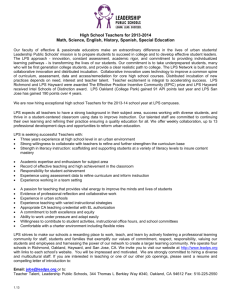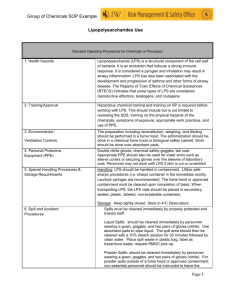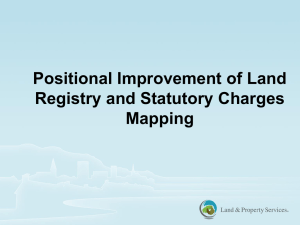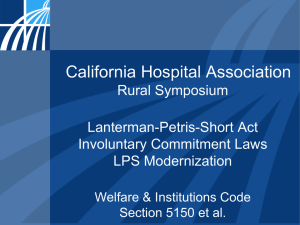ENTEROSORPTION AS AN IMPORTANT METHOD OF
advertisement
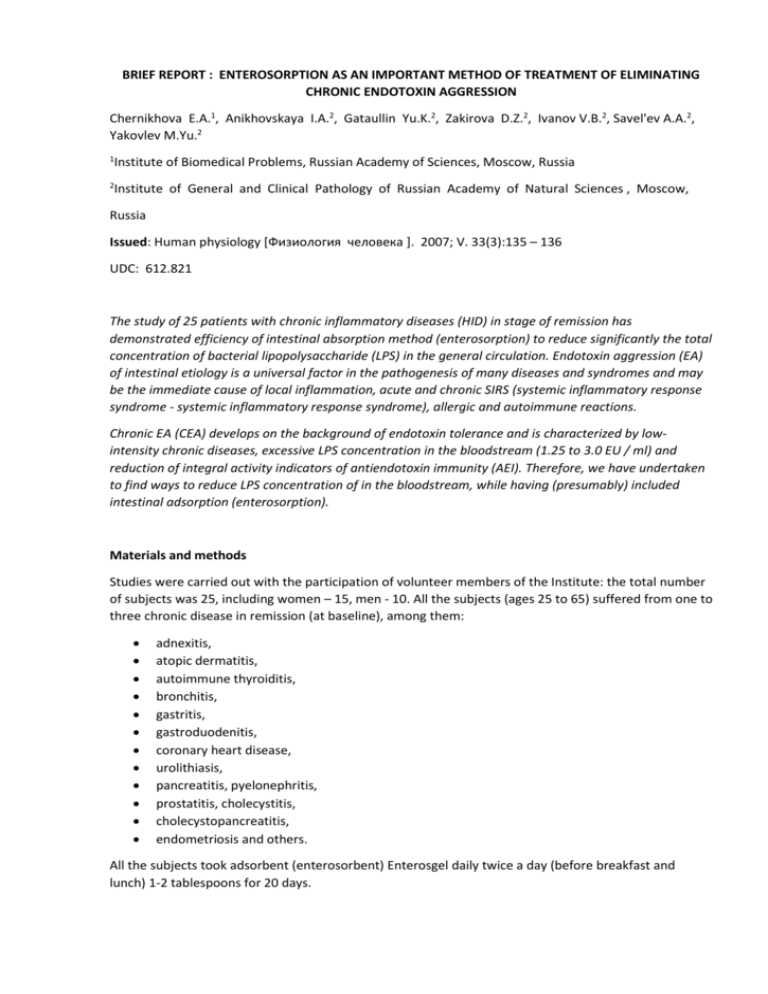
BRIEF REPORT : ENTEROSORPTION AS AN IMPORTANT METHOD OF TREATMENT OF ELIMINATING CHRONIC ENDOTOXIN AGGRESSION Chernikhova E.A.1, Anikhovskaya I.A.2, Gataullin Yu.K.2, Zakirova D.Z.2, Ivanov V.B.2, Savel'ev A.A.2, Yakovlev M.Yu.2 1 Institute of Biomedical Problems, Russian Academy of Sciences, Moscow, Russia 2 Institute of General and Clinical Pathology of Russian Academy of Natural Sciences , Moscow, Russia Issued: Human physiology [Физиология человека ]. 2007; V. 33(3):135 – 136 UDC: 612.821 The study of 25 patients with chronic inflammatory diseases (HID) in stage of remission has demonstrated efficiency of intestinal absorption method (enterosorption) to reduce significantly the total concentration of bacterial lipopolysaccharide (LPS) in the general circulation. Endotoxin aggression (EA) of intestinal etiology is a universal factor in the pathogenesis of many diseases and syndromes and may be the immediate cause of local inflammation, acute and chronic SIRS (systemic inflammatory response syndrome - systemic inflammatory response syndrome), allergic and autoimmune reactions. Chronic EA (CEA) develops on the background of endotoxin tolerance and is characterized by lowintensity chronic diseases, excessive LPS concentration in the bloodstream (1.25 to 3.0 EU / ml) and reduction of integral activity indicators of antiendotoxin immunity (AEI). Therefore, we have undertaken to find ways to reduce LPS concentration of in the bloodstream, while having (presumably) included intestinal adsorption (enterosorption). Materials and methods Studies were carried out with the participation of volunteer members of the Institute: the total number of subjects was 25, including women – 15, men - 10. All the subjects (ages 25 to 65) suffered from one to three chronic disease in remission (at baseline), among them: adnexitis, atopic dermatitis, autoimmune thyroiditis, bronchitis, gastritis, gastroduodenitis, coronary heart disease, urolithiasis, pancreatitis, pyelonephritis, prostatitis, cholecystitis, cholecystopancreatitis, endometriosis and others. All the subjects took adsorbent (enterosorbent) Enterosgel daily twice a day (before breakfast and lunch) 1-2 tablespoons for 20 days. 1-2 days before the start of the course and 1-2 days after the end of treatment the Enterosgel, a study of total endotoxin concentration (ET) in serum was carried out ("Micro-LAL-test"), as well as integrated activity of humoral AEI indicators ("SOIS-ELISA") and EA etiology ("Etio-Screen"). EA etiology was considered established if antibody (AB) concentration to the polysaccharide part of LPS was three times higher than the upper limit of normal or three times less than the lower limit of normal. Results and discussion The study revealed the presence of CEA in 24 subjects (96%). Prior to enterosorption course (4%) LPS content in the test serum one subject had LPS level within the physiological range (0.6 EU / ml), in 10 subjects (40%) ET concentration was 1.25 EU / ml, in 1 (4%) - 1.5 EU / ml, in 8 (32%) - 2.0 EU / ml, in 2 (8%) - 2.5 EU / ml, and in 3 (12%) -3.0 EU / ml. As a result of administration of enterosorbentб 18 subjects (75%) experienced a significant reduction in the serum ET concentration, in 5 (21%) LPS level in the general circulation remained at the same level and in 1 (4%) subject the concentration increased from 1.25 to 2.0 EU / ml. As a result of administration of Enterosgel, a number of subjects with normal LPS concentration increased by 7 times, with ET serum level from 0.6 to 1.25 EU / ml has increased twice, and with LPS concentration from 1.5 to 3.0 EU / ml - has decreased almost by 5 times, respectively. As a result of enterosorption, average ET levels in the general circulation have decreased by 56% (from 1.78 ± 0.13 to 1.13 ± 0.09, t = 4.1820). Average concentrations of antiglycolipid antibodies have not changed significantly, despite the decrease in antigenic stimulation (from 153.4 ± 5.7 to 166.6 ± 6.2, t = 1.5507). Thus, it is possible to state that Enterosgel (in monotherapy) has the ability to lower intestinal ET concentration in the general bloodstream of patients with chronic inflammatory diseases. Conclusions Method of intestinal adsorption (enterosorption) can be used as a means of CEA elimination. Monotherapy with Enterosgel, the intestinal adsorbent of new generation, reduces the average LPS concentration in the general circulation by 56% and is capable to eliminate CEA in every fourth patient with chronic inflammatory diseases.


